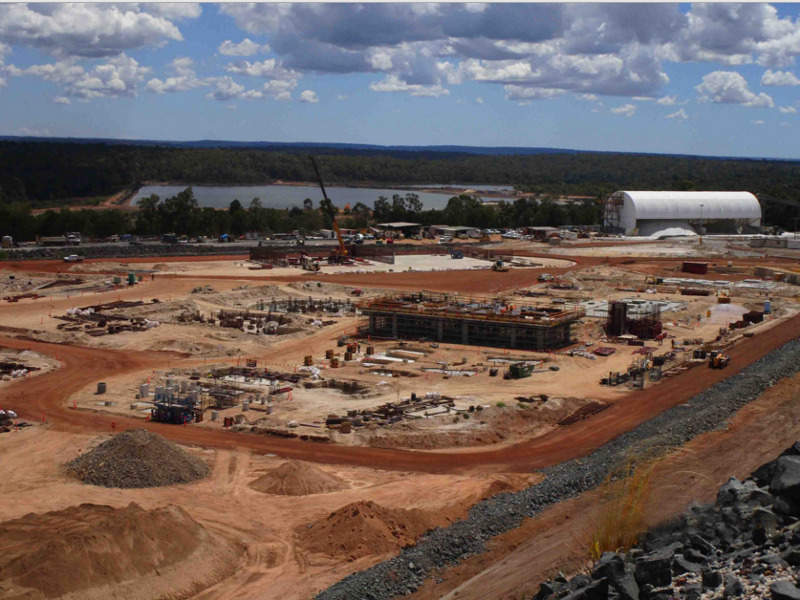The Greenbushes mine in Western Australia is the biggest operating lithium mine in the world. It is located approximately 250km south of Perth within the Shire of Bridgetown-Greenbushes, Western Australia.
Talison Lithium Australia, a wholly-owned subsidiary of Windfield Holdings, is the project developer. Tianqi Lithium Industries, a company based in China, holds 51% stake in Windfield Holdings, while US-based company Albemarle Corp holds the remaining 49%.
Greenbushes is currently undergoing an expansion, which is aimed at increasing the mine area and upgrading the existing ore facilities. The expansion is expected to increase the production of spodumene ore and lithium mineral concentrate from the Greenbushes deposit and meet the increasing global demand for lithium products.
Construction on the expansion project is anticipated to start in late-2018 and will be completed in 2020. It is expected to create approximately 300 jobs, in addition to increasing the operational jobs from the current 220 to approximately 650.
The lithium carbonate-equivalent (LCE) production at Greenbushes is expected to increase to more than 160,000 metric tonnes per annum (Mtpa) from the current 80,000Mtpa, following the expansion. The current production rate of spodumene ore will be increased from 4.7Mtpa to 9.5Mtpa, which will enable the production of up to 2.3Mtpa of lithium mineral concentrate.
Greenbushes lithium mine expansion
The current expansion is referred to as stage three and stage four expansions of the Greenbushes lithium mine. Conventional open-cut method of mining will be applied in the expanded areas.
The existing pits C1, C2, and C3 will be combined and expanded as a single open-pit by approximately 2.8km length, 1km width, and up to 450m depth. The mining rate will be increased to approximately 16 million bank cubic meters (Mbcm) for reaching the target of 9.5Mtpa of spodumene ore.
As part of upgrading the existing facilities, Talison proposes to construct two new chemical-grade processing plants, a crusher, and centralized ROM, while expanding the existing Floyds Waste Rock Landform (WRL).
The new chemical-grade processing plants (CGP3 and CGP4) will have a design capacity of up to 2.4Mtpa each. The plants are expected to have combined production capacity of up to 1.0Mtpa lithium mineral concentrate at a grade of approximately 6% Li2O.
The Talison CGP2 ROM will be expanded to facilitate the additional ore produced by CGP3 and CGP4. A three-stage crusher (Talison Crusher 3) will be established to the east of Maranup Ford Road and will be connected to the processing plants through a conveyor.
Lithium mineral concentrates produced under the expansion project will be transported either to the Port of Bunbury or Fremantle for export. Lithium concentrate is also proposed to be supplied to either the under-construction Tianqi lithium processing plant in Kwinana or to Albemarle’s proposed lithium processing plant in Kemerton.
Greenbushes lithium mine geology and mineralization
The Greenbushes mining area comprises pegmatites of the lithium-caesium-tantalum family, thrusting along a major north-west regional fault zone.
Believed to be formed approximately 2.5 billion years ago, the Greenbushes deposit hosts pegmatite in a 3km-long and up to 300m-wide main zone. A number of small pegmatite dykes and pods are situated along the main body of the pegmatite.
The ore body is located within the Balingup Metamorphic Belt (BMB), the southern segment of the Western Gneiss Province. The deposit penetrates into the BMB and is hosted within a north to north-west trending lineament called the Donnybrook-Bridgetown Shear Zone.
The main mineralization zone features several smaller pegmatite dykes and pods along the main body.
Greenbushes lithium mine reserves
As of December 2012, Greenbushes lithium mine’s proven and probable mineral reserves are estimated to be 61.5Mt grading 2.8% lithium. The mine is estimated to contain approximately 4.3Mt of lithium carbonate-equivalent (LCE).
Mining and processing at the Greenbushes lithium mine
Conventional open-pit mining method involving drilling and blasting followed by load and haul is being used at the Greenbushes lithium mine.
Talison is currently processing spodumene ore in two separate processing plants – technical and chemical-grade, to produce a lithium mineral concentrate of approximately 6% lithium oxide (Li2O). The processing plants employ gravity methods to produce lithium mineral concentrate.
Talison constructed a chemical-grade plant 1 (CGP1) with a SC6.0 production capacity of 550,000tpa in 2012. A second plant CGP2 is being constructed to further increase the production capacity by approximately 500,000tpa, from 1.34Mtpa to approximately 180,000tpa of LCE.
The produced lithium concentrate is bagged and shipped from the port of Bunbury.
Infrastructure facilities proposed for the expansion
The expansion project calls for the construction of a bypass road to minimize truck movements through the town of Greenbushes. The works also include construction of additional linear infrastructure such as roads, power supply, and pipelines.
A new mine service area (MSA) will be established in approximately 32ha, while Floyd’s WRL will be expanded as part of the expansion project.
The new tailings storage facility (TSF4) will be located to the south of the existing TSFs and will have a footprint of approximately 240ha.
Contractors involved
GHD prepared the environmental referral supporting report for the Greenbushes lithium mine expansion project, while WML Consultants was engaged to identify a mine access route for trucks bypassing the Greenbushes townsite.
MSP Engineering was awarded the contract for preparing the feasibility study (FS) report for the Greenbushes expansion project.
Talison has engaged MSP Engineering as the head contractor for its CGP2 project in June 2016.
Kerman Contracting was awarded a $23.5m contract to construct a new bulk storage facility at Port of Bunbury for facilitating the Greenbushes mine expansion. Kerman was also engaged for constructing a new crushing and screening circuit for MSP Engineering at the Greenbushes mine expansion project.





